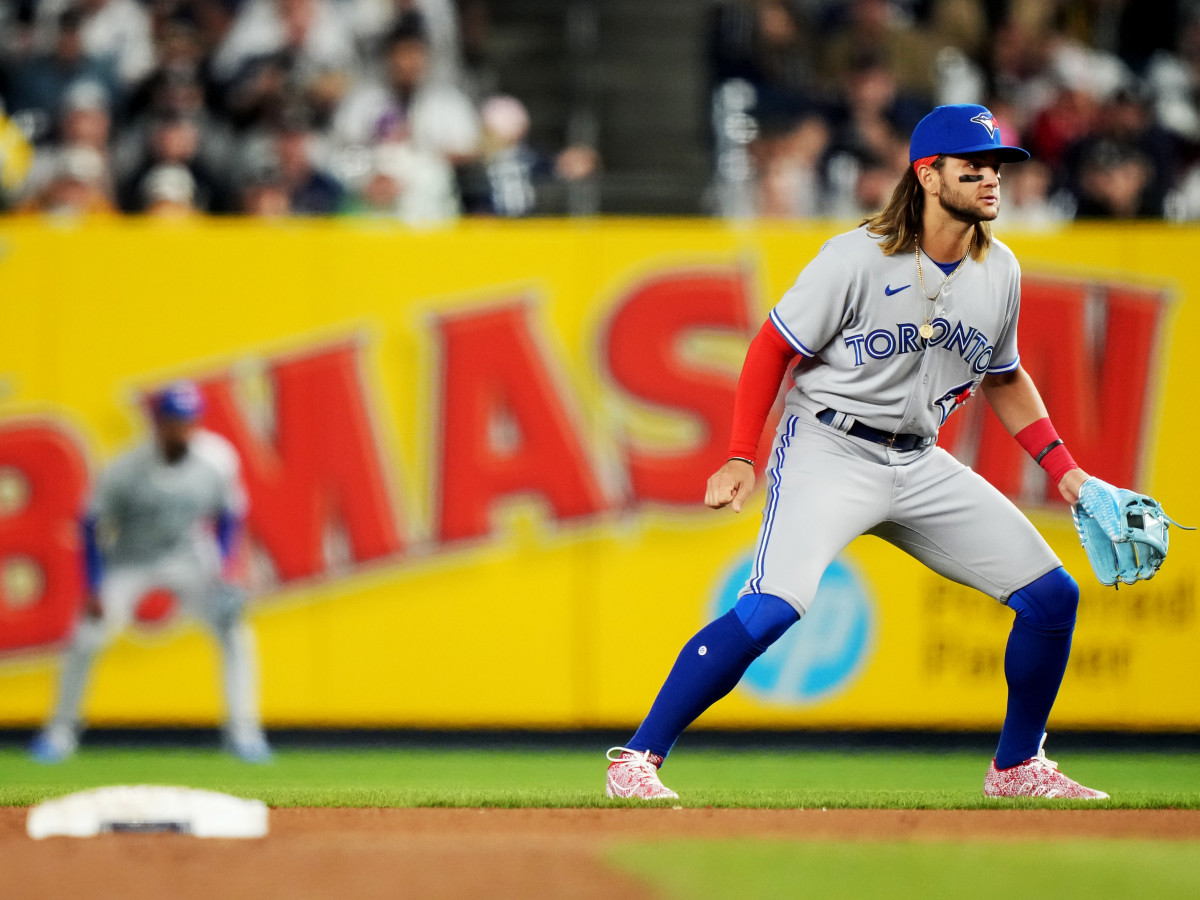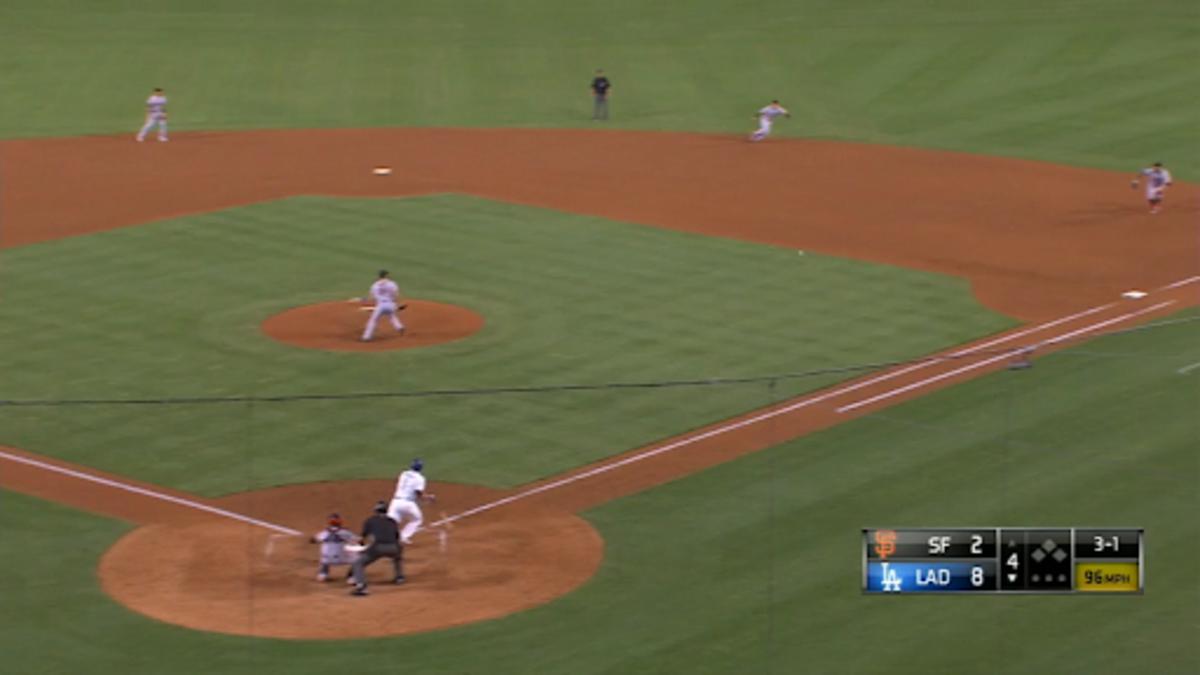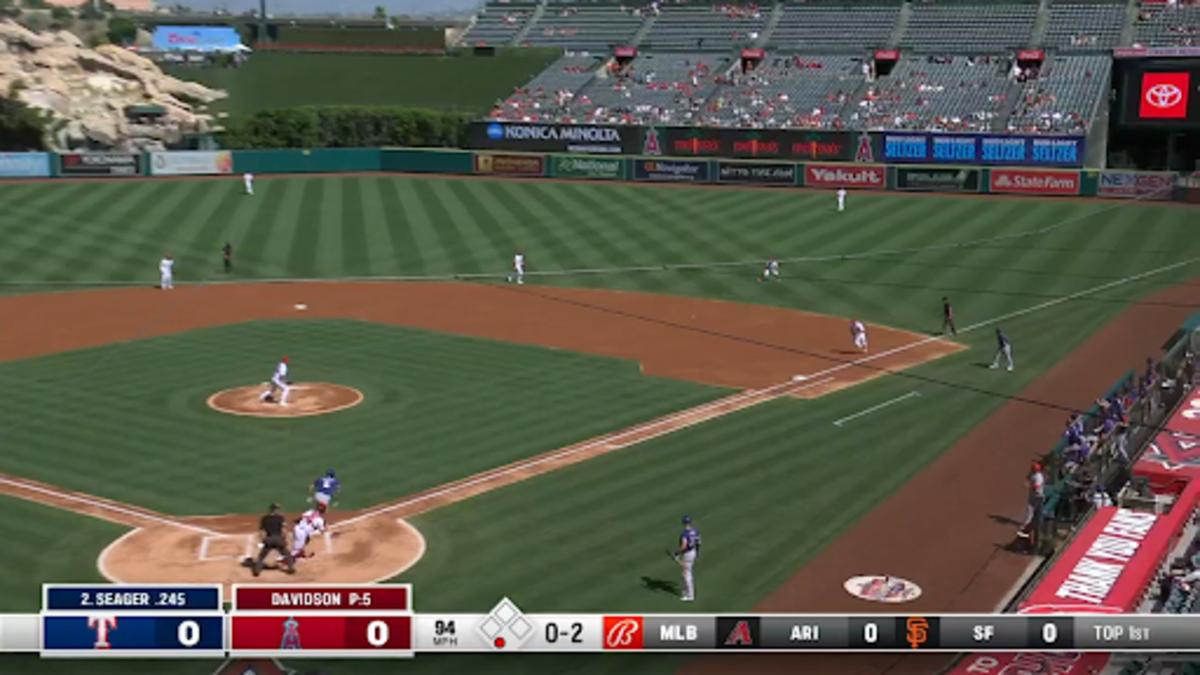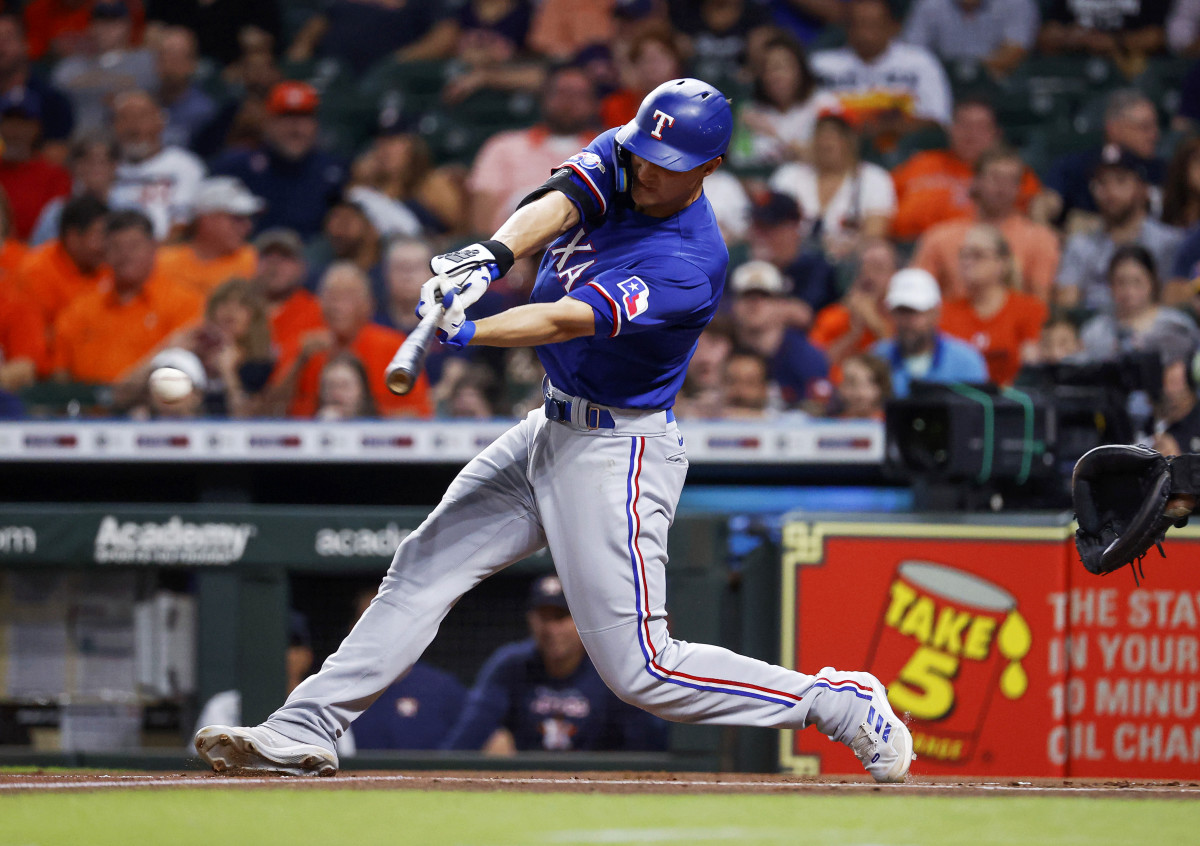How Banning Infield Shifts Will Change MLB
As teams cobble together their rosters this winter, they must tackle this riddle thrown at them: How will the ban on shifts change offense and defense? Baseball will look different next season—at least from the past seven years or so, when shifts grew prevalent, sucked more than 2,000 hits out of the game and deemphasized range at second base.
We have so much data on how shifts changed baseball that it is not difficult to make an educated guess as to what will happen next year without them. My top conclusions:
1. The MLB batting average should increase from .243 last season (the fifth-worst ever, and the worst in 54 years) to .255 (equaling the highest since 2011).
2. Ground balls will go up, and strikeouts will go down, both slightly.
3. Corey Seager of Texas and Matt Olson of Atlanta will benefit the most from the new rules.
4. The Giants need a second baseman, and the Cardinals will rethink Nolan Gorman at second base.
Here are the questions and answers that prepare us for the shift away from shifts:
1. How did shifts change baseball?

To understand how the game will be played in 2023, first you must understand the arc and effect of defensive shifts. They have been around since Ted Williams, but only in the past four years did they become massively prevalent and effective. The big leap began when the use of shifts doubled from 2017 to ’19—largely because of the success of the Astros and Rays, the first and only teams to exceed 30% shifts in those years. Houston won the ’17 World Series using a shift 35% of the time in the regular season—then a record, now a level exceeded by 11 teams.
Since 2019, shifts changed how the game looked and how it was played. They made the game aesthetically awkward and less entertaining, which is why a rule change was needed: to rebalance the entertainment value of baseball against its brutish efficiency. In the blend of art and science, baseball should always be more about an athletic competition than an intellectual contest among hackers.
Always remember this about shifts: They were designed to turn hard-hit balls into outs. The average ground ball is hit 86.8 mph. Most balls hit softly or at average velocity are still going to be outs next year. It’s the hard-hit ones that are more likely to become hits because more velocity = less time.
Defenders will have less time because teams can’t bunch three fielders on the pull side of the infield, and they can’t push infielders into the outfield grass to cover more ground.
With that in mind, when I looked at the year-by-year use and effect of shifts I considered hard-hit balls (90 mph or more) to be most instructive. Over the past seven years, shifts more than tripled and they reduced batting average on hard-hit grounders by 80 points!
MLB Batters on Hard-Hit Grounders (90+ MPH)
Shift Pct. | Avg. vs. No Shift | Avg. vs. Shift | |
|---|---|---|---|
2022 | 34% | .349 | .273 |
2021 | 31% | .346 | .290 |
2020 | 35% | .355 | .271 |
2019 | 26% | .375 | .309 |
2018 | 18% | .376 | .293 |
2017 | 12% | .396 | .315 |
2016 | 14% | .381 | .313 |
2015 | 10% | .384 | .285 |
Total | .373 | .293 |
Here is how rapidly things changed, the demise of hitting in four-year increments:
Shift Pct. | Ground-ball Batting Avg. | |
|---|---|---|
2019–2022 | 31% | .241 |
2015–2018 | 13% | .248 |
2. Don’t hitters want fewer ground balls anyway?
Yes, that was one effect of the proliferation of shifts. Batters saw hit probability on grounders reduced by the shift, so they tried to hit over the defensive alignment. They chased slug, not batting average, also because that is the reward system clubs use as compensation. “Slug is in the air” became the mantra of the Launch Angle revolution.
From 2015 to ’22, the shift helped take 2,065 ground-ball hits out of the game. Put them back in, and the MLB batting average goes from .243 to .255.
Over those same seven years, batters hit 7,206 fewer ground balls, a decline of 12%. As ground balls become more rewarded—by hits, and in time, by compensation—those ground balls will come back.
Think about what happened to Cody Bellinger: from 2019 MVP to ’22 non-tender free agent. His average launch angle from his first four seasons to the past two seasons increased from 17.1 degrees to 21.0 degrees. His ground-ball hits were cut in half, from 37.8 per year to 18.5.
3. How noticeable will the change be next season?
Not as noticeable as you think. Put those 2,065 ground-ball hits back into the game and you’re still talking about only about one more hit per game.
Let’s use the past World Series as an example—the last one with shifts. The Phillies and Astros used a shift 38% of the time, slightly above the MLB regular-season rate of 34%. Batters combined to hit 30 ground balls when facing a shift. I looked at each one of them. Only seven of them were likely hits without the shift—that’s a small sample that dovetails with the large sample rate of about one more ground-ball hit per game.
Here is what is interesting about those seven World Series hits taken away by the shift: Kyle Schwarber and Bryce Harper of Philadelphia each accounted for three of them. And the Astros’ combined no-hitter doesn’t exist without the shift; it took away a hit from Schwarber.
4. Which hitters benefit the most from the ban on shifts?
Seager and Olson will love the new rules. Seager hit .176 last season on hard-hit grounders—65 points below the major league average. He lost at least nine hits because of shifts. Turn those outs into hits and his batting average improves from .245 to .260. Nobody hit more hard-hit groundouts into the shift last season than Seager:
Most Hard-Hit Groundouts Facing Shift, 2022 (90+ MPH)
Corey Seager, Rangers | 71 |
|---|---|
Yordan Alvarez, Astros | 66 |
Rowdy Tellez, Brewers | 66 |
Matt Olson, Braves | 59 |
Kyle Tucker, Astros | 54 |
Shohei Ohtani, Angels | 51 |
By the way, the right-handed batter with the most such hard-luck outs was Rhys Hoskins of Philadelphia with 43.
Seager is the canary in the coal mine of the shift era. In five years, he has seen his shift rate increase from 14% to 93% and his hard-hit groundouts increase by 70%.
Seager Year-by-Year Batting
Shift Pct. | Hard-Hit Groundouts | Batting Avg. on Hard-Hit Ground Balls | |
|---|---|---|---|
2022 | 93% | 75 | .176 |
2021 | 77% | 39 | .328 |
2020 | 75% | 26 | .270 |
2019 | 36% | 35 | .375 |
2017 | 14% | 44 | .366 |
2016 | 11% | 64 | .385 |
Here is what that difference looks like: two almost identical ground balls by Seager six years apart. (Note the ball is in virtually the same spot on the freeze frame.) First, a ball hit 104.2 mph on Sept. 21, 2016, before the shift revolution fully took root. It’s an easy single because the second baseman, stationed on the dirt with the shortstop on the other side of the bag, can’t get there in time.
The second ground ball was hit 106.2 mph on Oct. 2, 2022. It is an easy out because the second baseman, playing in the shift, can play deeper and in what used to be an open hole.
Sept. 21, 2016: 104.2 mph single

Oct. 2, 2012: 106.2 mph groundout

5. What’s the story with Olson?
He’s another canary. In his first three seasons, Olson saw 57% shifts and hit .355 on hard-hit grounders. In four seasons since, he has seen 86% shifts and hit .247 on hard-hit grounders. Over the past three seasons, nobody has grounded out hard into the shift more than Olson:
Most Hard-Hit Groundouts Facing Shift, 2020–22 (90+ MPH)
Matt Olson, Braves | 147 |
|---|---|
Yordan Alvarez, Astros | 122 |
Max Kepler, Twins | 121 |
Kyle Tucker, Astros | 114 |
Corey Seager, Rangers | 113 |
6. What does the ban mean for second base play?
The days are over of signing a free agent like Mike Moustakas for $64 million over four years to play second base. No longer can you hide a lack of range at second base.
The Giants gave 138 starts at second base to Thairo Estrada and Wilmer Flores and wound up with the worst second base defense in the majors (–52 defensive runs saved). Estrada (–12 DRS) and Flores (–9) were two of the four worst second basemen who played at least 60 games at the position. Jose Altuve (–15) and Jonathan India (–15) of the Reds were the other two.
Wanting to get Gorman’s lefty bat in the lineup, the Cardinals played him at second base last season because Nolan Arenado was cemented at third base, Gorman’s true position. St. Louis could mask Gorman’s limitations at second with Tommy Edman, one of the best fielders in the game, playing shortstop. Gorman (–6 DRS) will get more exposed if he remains at second base next season without the shift.
7. What about line drives?
Thankfully, no more of those scorched line drives into the shift that are outs because of the rover position. They didn’t happen often, but they were buzz killers. In five years, line-drive outs hit at least 100 mph and between 140 and 250 feet increased fourfold, from 39 to 153. Your tough-luck line-drive leaders last year? Yep, Seager and Schwarber. Welcome back, hits that should be hits.
8. What is the workaround?

Front offices are thinking of countermeasures right now. One idea: flex the off-side outfielder into the rover position to jam the pull side with outfielders against dead pull hitters such as Anthony Rizzo, Max Muncy or Schwarber. That seems too risky, though, because you are defending the single at the risk of an extra-base hit to the opposite field, as rare as that may be.
You may see the shortstop, when positioned directly behind second base, in motion to the pull side as the ball is thrown, which could be a distraction to the batter as well.
And beware the team that tries to bow the arc of the infield dirt farther into the outfield to give their infielders more depth. MLB will have to enforce the industry standard as they do with the height and slope of mounds.
9. What teams are affected the most?
The Dodgers and Astros ranked in the top three last season in most shifts (the Dodgers led with 53%) and lowest batting average on balls in play vs. the shift (the Astros led at .246). You would think the ban hurts whatever “intellectual advantage” they enjoyed from what they know about playing defense. But Los Angeles manager Dave Roberts told me the ban is advantageous for bigger market teams because they can afford the power hitters who see the most shifts. His take is that the offensive benefit outweighs the defensive restraint.
Apply that theory to the Yankees. Imagine you are Rizzo or any other left-handed hitter and you see a shift with the rover crowding that small right field at Yankee Stadium. It is visually intimidating. It looks like there is no room to get a hit. Indeed, Yankees left-handed hitters facing a shift at home had a BABIP of just .200, the lowest in baseball. Next season the field will open for them.
Rizzo pulled the ball slightly more with the 2016 Cubs (39.6%) than he did with the ’22 Yankees (38.3%). But his BABIP in ’16 was .309 and in ’22 it was .216. Why the huge difference? He saw way more shifts and, as a result, hit way more fly balls. As the field opens, Rizzo should be a better hitter.
10. What’s the bottom line?
Expect to see changes, all of them for the better, but not drastic ones. Expect one more ground-ball hit per game. Expect batting average to go up. Expect more athletic plays at second base. Expect a few more doubles (remember, no more four-person outfields). Expect Seager and Olson to be grabbed quickly in your fantasy league draft.
More MLB Coverage:
• Building the Best Blue Jays Team for 2023
• Rafael Palmeiro Opens Up About His Steroid-Tainted Legacy
• Astros Owner’s Carelessness Reflected in Insulting Contract Offers
• Ranking MLB’s Top 50 Free Agents, With Signing Predictions
• The 2022 World Series Is a Lesson for the Rest of Baseball
